By Christy Swift
Photography by Matthew Christian
It’s Friday morning and the Sebring International Raceway is hopping. Today they’re hosting the Sport Car Club of America (SCCA) Nationals. There are between 350 and 400 race cars on and around the track today, some roaring past us, some being unloaded from semi trucks, and some tucked into makeshift “garages” on an old airport runway they now call “The Paddock.”
“The Sebring Raceway started as a World War II Army Air Corps base,” explains John Story, senior director of marketing, communications, and business development for the race track. “It was used to train B17 bomber pilots.” Some of the concrete and asphalt dates all the way back to 1941, when the base was built.
The SCCA are amateur racers—people who enjoy the sport as a hobby. A mix of cars surrounds us, including Mazda Miatas, Mini Coopers, street modded sedans, open-wheel Indies, and at least one Lamborghini.
The sport of racing is fast. It’s high octane. It’s dangerous. Or as John puts it: “It’s not safe. It’s never going to be safe.” So who’s in charge of keeping people as safe as possible under these conditions? One of those people is Michelle Adams.

Michelle Adams, Race Control
Michelle holds the title of Race Control, and if you peer way up on the fourth floor of the race track’s tower, you’ll find her looking out through a long glass window alongside members of her team. With earbuds in her ears, three to four radios on her hips, and a computer at her disposal, Michelle’s job is to make a dangerous sport as safe as humanly possible.
Along with her backup, Josh Young, Michelle is in charge of dispatching fire trucks, ambulances, and operations equipment (the trucks that either drag or transport a disabled vehicle off the track) and handling debris and oil clean-up. She also deals with issues regarding spectators and liaises with the race track’s security team and the sheriff’s department, if necessary.
Many race tracks are a simple oval, and the entire track can be seen from the control tower. That’s not true of the Sebring International Raceway, which features 17 total turns, each “staffed” by a pair of onsite corner marshalls whose job it is to watch for problems, report them to Michelle, and flag drivers to warn them of an obstacle ahead. Because she can’t see the whole track, Michelle has to rely on internal visualization and a deep trust in her team in order to get the right equipment to the right place on the track, ensure any injuries are dealt with, and keep everyone safe until the track is cleared again. Serious incidents can result in the track being yellow-flagged, meaning all cars are required to slow down. Even more serious cases may require a red flag, meaning all cars must pull over and wait until the track has been cleared to resume the race.
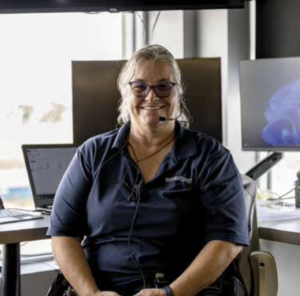
Michelle Adams
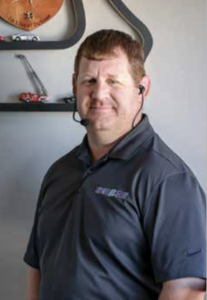
Josh Young
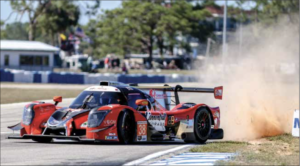
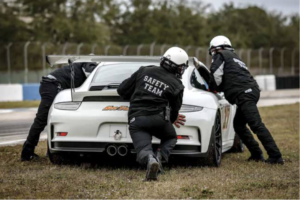
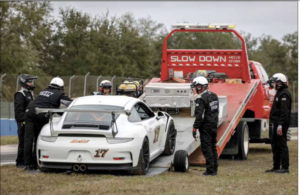
“It’s pretty hectic,” Michelle says. “When you’ve got a race like what’s going on right now, the turn workers will call it in, and if it’s, say, an impact in the wall, they’ll tell us to send out the trucks. You’ve got to figure out what trucks you’ve got to send and where to send them and what equipment has to go. They’ll call in what else they need. You communicate with the stewards and the marshalls and tell them, ‘These are the flags you need to help cover your safety personnel,’ etcetera. With the team that we have we can usually put our track back together within eight minutes for a minor impact. For a flat tow, we can do it in a couple of minutes.” A flat tow refers to hooking up to the car and dragging it off the track. More serious collisions might require a flat truck to physically carry the vehicle off.
Michelle has been working at the Sebring International Raceway for the past 35 years. Becoming Race Control was “kind of a fluke,” she says. Originally from Pahokee, she spent some time in Georgia, and eventually worked as dispatch for the Sebring Airport Authority fire department. One day there was a big fire during the 12 Hours race, and her fire chief had her dispatch fire trucks from the station to handle it. Following that incident, the race track made the decision to have trucks and dispatch onsite, and Michelle was brought on board part-time.
In a male-dominated sport like racing, many are surprised to find a woman at the helm of Race Control, but Michelle isn’t surprised. She explains that in this sport you often find women in safety roles. She loves her job partly because she loves the thrill of the races (she’s an Indy fan) and partly because she gets to meet so many people from all over the world.
“You get to watch the battle between the classes, the cars neck and neck, the excitement of the wrecks. I don’t like seeing anybody hurt, but it’s still exciting,” she says. Michelle doesn’t have a favorite driver. “I like them all,” she says. “To me, everybody’s got a place in the race. Even last place is a place.” She enjoys meeting race industry professionals and even the occasional celebrity. She got to meet Reba McIntyre recently, whom she described as “the sweetest lady I ever met, very Southern.” Unfortunately, the day Harrison Ford visited was her day off.
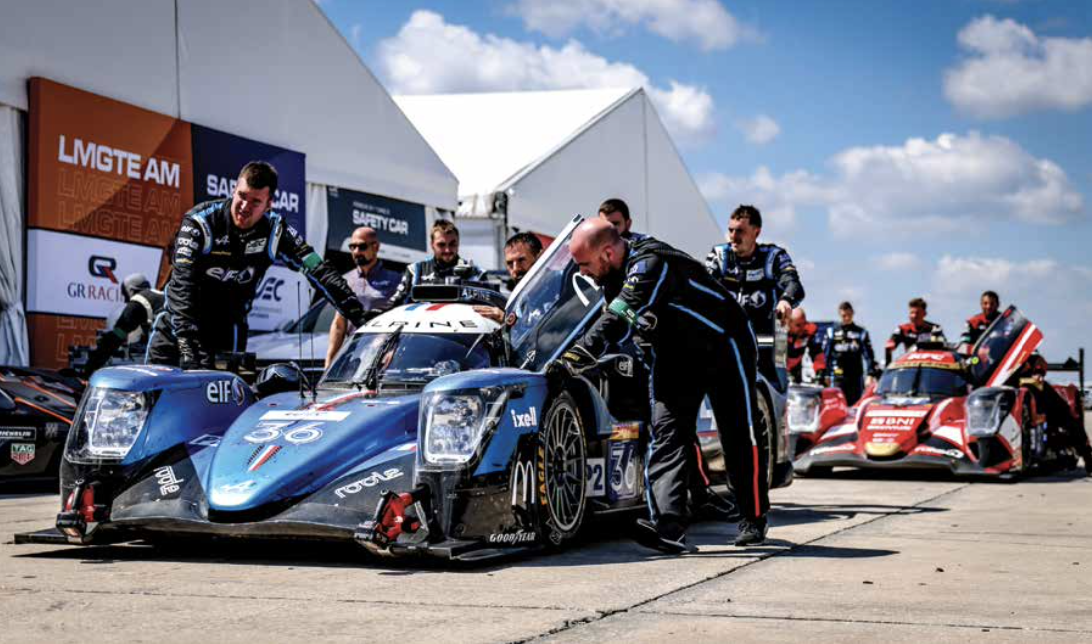
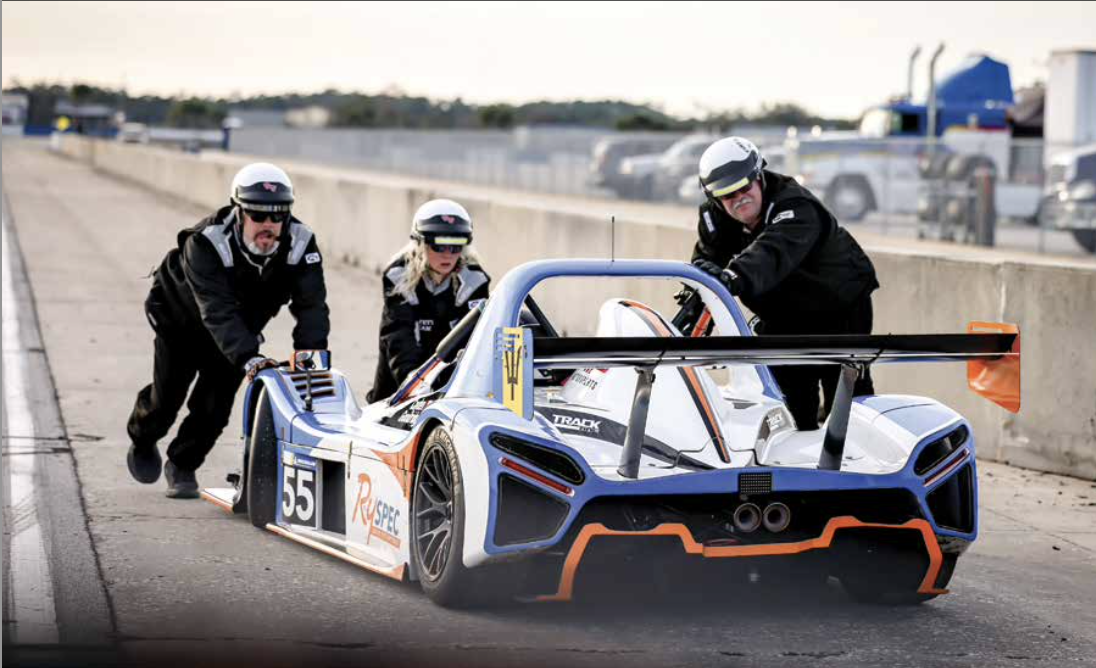
Of course, Michelle doesn’t handle safety all alone. When medical services are required, Safety Director Billy Kingston steps in, overseeing the Advent Medical Center onsite that is open during the larger events. The site hosts physicians, nurses, and technicians. Anything that can be treated at the track is done onsite, and every driver involved in an accident is required to go to the care center. The staff here can also treat non-accident-related concerns, such as heat-induced illness, dehydration, and even the flu. Spectators who become ill or get injured are also seen here. During smaller races, like today’s, when the medical center isn’t open, teams of doctors and paramedics are always available to assess and treat patients.
Their Dedication Is Without Question
In a sport that never can and never will be entirely “safe,” taking responsibility for the safety of those involved takes a special kind of person. In order to show their appreciation for the important work Michelle and Billy do, the Raceway leadership recently awarded both of them a Lifetime Achievement Award.
“They were chosen because they are both part-time employees and their dedication is without question. They give so much of their time and have such a passion,” John explains.
As the inaugural winner of the award, Michelle says she was “surprised and very honored” to be recognized. The blue and white trophy sits in her china cabinet at home where she can see it every day. With a radiant smile, she says, “I’m very proud of it.”




hello awesome story my grandson Jeremy Fletcher Mazda 5 cup. beautiful race track ! love to all staff .